I have some data I gathered analyzing the change of acceleration regarding time. But when I wrote the code below to have a good fit for the sinusoidal wave, this was the result. Is this because I don't have enough data or am I doing something wrong here?
Here you can see my graph:
Measurements plotted directly(no fit)
Fit with horizontal and vertical shift (curve_fit)
Increased data by linspace
Manually manipulated amplitude
Edit: I increased the data size by using the linspace function and plotting it but I am not sure why the amplitude doesn't match, is it because there are very few data to analyze? (I was able to manipulate the amplitude manually but I don't understand why it can't do it)
The code I am using for the fit
def model(x, a, b):
return a * np.sin(b * x)
param, parav_cov = cf(model, time, z_values)
array_x = np.linspace(800, 1400, 1000)
fig = plt.figure(figsize = (9, 4))
plt.scatter(time, z_values, color = "#3333cc", label = "Data")
plt.plot(array_x, model(array_x, param[0], param[1], param[2], param[3]), label = "Sin Fit")




